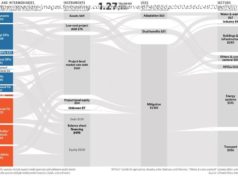With just three students left attending high school here, junior Kimberly Taylor moves from one empty classroom to the next, taking mostly online classes or studying alone.
By LISA RATHKE, Associated Press
ROCHESTER, Vt. — With just three students left attending high school here, junior Kimberly Taylor moves from one empty classroom to the next, taking mostly online classes or studying alone.
She misses her friends and her classes. She also worries about where she will attend school next year, now that her remote valley town has voted to close the combined middle and high school. And she worries about how she will get to another school, maybe having to travel over a mountain on roads that can be dicey in winter.
«It’s definitely going to be harder because currently I don’t have a car,» she said, «but next year I’m going to need one to get to school.»
Vermont, like some other rural states, has been wrestling with dropping enrollment, rising education costs and tightening budgets, and is searching for solutions; it has encouraged school districts to merge. Nationally, school budgets have yet to fully recover from the impact of the 2008-2009 recession, and while enrollment is increasing overall, the proportion of students in rural schools has been decreasing over the past decade, according to Patte Barth, the director of the National School Boards Association’s Center for Public Education.
But in many ways, Vermont’s predicament is special. It is a largely rural state, and one of the least populated, with a yearly average decline of about 1,300 students due to a stagnant population. The Burlington metro area, Vermont’s largest, barely tops 200,000 people. The remaining 400,000 residents are spread throughout a few smaller cities and many smaller towns, not far from one another as the crow flies but often separated by the ridges and valleys of the Green Mountains for which the state is named.
Some U. S. towns have tried to pool resources and get the benefits of economies of scale by consolidating districts or schools, but one downside can be transportation, with students taking a bus an hour and a half one way, requiring them essentially to extend their school day and cut into extracurricular activities, according to Barth.
Mountains surround picturesque Rochester, a 25-minute drive from the nearest big town. When Tropical Storm Irene washed away roads and bridges in 2011, it was virtually cut off from civilization.
For the past decade, the talk has been about how to keep the school open with fewer and fewer students, school board Chairman Jeff Sherwin said.
Rochester considered merging its school district with two other communities, but the proposal failed after not all the towns approved it. Now some of its 1,000 residents are thinking about homeschooling or moving, while some families worry how they will get students to and from school in another community.
In the next academic year, the elementary school will merge with the district serving neighboring Stockbridge, and each town will keep those schools open. Rochester middle and high school students will go to other schools, with parents providing transportation. One option would be for parents to drop them off 4 miles away in another town that would then take them to a school in Middlebury, a 40-minute drive from Rochester.
Teachers saw that the high school, which is next to the elementary school, would likely close, so some decided to leave last year, Sherwin said. That gave the school board about a month and half to find new teachers, he said, so the board chose to pay tuition for the high school students to attend schools in other communities, he said.
Taylor, who has attended the Rochester district all her life, said she didn’t have enough time to research what school to attend, so she decided to stay. Her brother attends the middle school, and their mother works in the school kitchen of the building that houses the middle school and high school.
Most of her friends left to go to school over a mountain in Middlebury or to an early college program in Randolph, about a half-hour drive.
«I knew that not everyone would stay, but I thought a couple more would,» said Taylor, who runs cross country but had to run with the middle school team this year. She now worries that scholarship money intended for Rochester graduates will no longer be available to her.
Karen Rogers, whose daughter attends the middle school, doesn’t know what their family will do about school next year.
«We’ve talked about actually moving out of town,» she said. «We’re not sure what to do yet.»
Resident Connie Mendell said she sees both sides of the issue.
«It’s kind of like we’re just in a really tough spot for a while. And I hate to say it but I’m glad my kids made it through before this happened,» she said.






